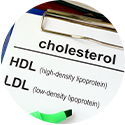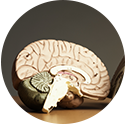New evidence reveals the possibility of mood-enhancing effects associated with some flavors, stemming at least in part from natural ingredients bearing a striking chemical similarity to valproic acid, a widely used prescription mood-stabilizing drug. This effect joins those previously reported for chocolate, teas and some other known comfort foods.
Scientists presented their findings of more than 1,700 substances that make up the flavors of common foods at the 244th National Meeting & Exposition of the American Chemical Society, the world’s largest scientific society.
Other flavor substances may have similar effects due to chemical similarities to a popular mood-elevating drug. “Molecules in chocolate, a variety of berries and foods containing omega-3 fatty acids have shown positive effects on mood. In turn, our studies show that some commonly used flavor components are structurally similar to valproic acid,” said Karina Martinez-Mayorga, Ph.D., leader of a research team that has been studying the effects of flavors on mood.
She described research done while working at the Torrey Pines Institute for Molecular Studies, and now is with the Chemistry Institute at the National Autonomous University of Mexico.
Sold under brand names that include Depakene, Depakote and Stavzor, valproic acid is used to smooth out the mood swings of people with manic-depressive disorder and related conditions.
“The large body of evidence that chemicals in chocolate, blueberries, raspberries, strawberries, teas and certain foods could well be mood-enhancers encourages the search for other mood modulators in food,” noted Martinez-Mayorga.
Her study involved use of techniques of chemoinformatics ― the application of informatic methods to solve chemical problems ― to screen the chemical structures of more than 1,700 food flavor ingredients for similarities to approved antidepressants, marketed drugs and agents with reported antidepressant activity. The main result so far in the ongoing project involves valproic acid. In the future, she said that the team plans to move from the area of analyzing the database to actually begin testing the flavor/mood hypothesis experimentally. The end result may be dietary recommendations or new nutritional supplements with beneficial mood effects, she added.
“It is important to remember that just eating foods that may improve mood is not a substitute for prescribed antidepressive drugs,” Martinez-Mayorga cautioned. And for people not requiring medication, she notes that eating specific foods and living a healthful lifestyle can generally boost mood. (1)
The link between nutrition and managing mood and depression has been well documented. Here at the Magaziner Center for Wellness, we thoroughly assess each patient’s physical state and treat any triggers of mood and depression without the use of medication. To begin, we look at food sensitivities and allergies. If such allergies or sensitivities are detected, we work with the patient to modify diet and environment to eliminate the element’s negative impact. Mold exposure and and other environmental irritants, such as household chemicals, which often harm the nervous system and impact mood are examined.
Research into Omega 3 has shown significant improvements in patients whose diets are supplemented by this essential oil. (2)
Many medical research papers reveal an association between higher levels of nutrient intakes (linoleic acid, riboflavin, niacin, folate, vitamin B6, vitamin B12, pantothenic acid, calcium, phosphorus, potassium, iron, magnesium, zinc) and better mental health. (3)
Numerous medical studies have supported that a deficiency of vitamin B12 can lead to problems of mood and memory as well as neurologic symptoms. Patients have also reported problems with unsteady gait, muscle weakness, fatigue, irregular heart beat, dizziness, faintness, hair loss.
We’ve been measuring Homocysteine and MMA (methylmalonic acid) as marking aids for a more thorough evaluation of B12 status. When symptoms are present, and wee see suboptimal levels (and even within the “normal range” ) that can lead to symptoms, we strive for optimal B12 levels.
The serum B-12 range is very broad, usually about 200-900 and we often see patients who are told that their serum level is normal (ie, when at 300-400) but this is not optimal as the patient may function much better at 600 or even 800 which is twice what he/she was.
Questions about Omega-3, Vitamin B12, and nutrition and diet for mood? Call us or comment below 856-424-8222
1. American Chemical Society (ACS) (2012, August 19). Good mood foods: Some flavors in some foods resemble a prescription mood.
2. Kraguljac NV, Montori VM, Pavuluri M, Chai HS, Wilson BS, Unal SS. Efficacy of omega-3 Fatty acids in mood disorders – a systematic review and metaanalysis. Psychopharmacology Bulletin (2009) 42(3):39-54 .
3. 2. Davison KM, Kaplan BJ. Nutrient intakes are correlated with overall psychiatric functioning in adults with mood disorders. Can J Psychiatry. 2012 Feb;57(2):85-92.




































Recent Comments